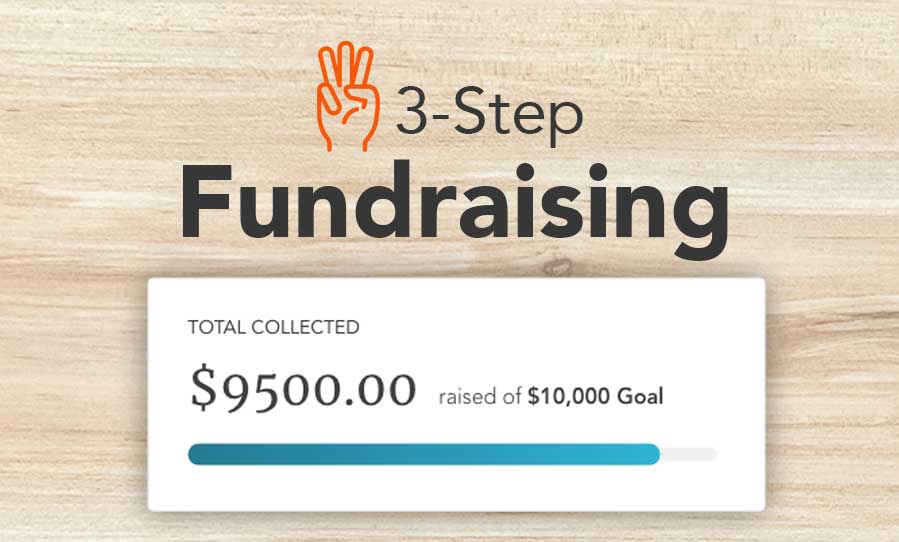The Duty of Neighborhood Interaction in Nonprofit Fundraising: Structure Lasting Relationships for Lasting Support
Neighborhood interaction is progressively acknowledged as an important element of successful nonprofit fundraising. By cultivating real relationships with regional stakeholders, companies can cultivate count on and loyalty, which are important for sustainable assistance. However, the techniques and strategies employed to involve neighborhoods vary widely, elevating crucial concerns regarding performance and impact. What are the very best techniques for growing these important links, and exactly how can nonprofits determine their success in this arena? Comprehending these characteristics might significantly affect the future of fundraising initiatives and the overall objective of nonprofit organizations.
Understanding Community Interaction
Community involvement is a crucial part of successful nonprofit fundraising efforts. Nonprofits must recognize vital stakeholders-- such as neighborhood participants, regional companies, and other companies-- to create reliable engagement approaches.
Reliable area engagement is based on active listening and responsiveness to the needs and interests of the area. This procedure includes getting responses, understanding area dynamics, and making certain that the organization's mission aligns with regional top priorities. Involving the community can take different types, including public meetings, volunteer chances, and collaboration campaigns, each developed to encourage participation and financial investment in the organization's goals.
In addition, area interaction need to be approached as a recurring discussion instead of a single initiative. By fostering a comprehensive setting where community voices are listened to and valued, nonprofits can build a solid foundation for future fundraising ventures. Eventually, a deep understanding of community interaction empowers companies to produce genuine links that enhance their total effectiveness and sustainability.
Advantages of Strong Relationships
Solid connections formed through neighborhood interaction yield various benefits for nonprofit fundraising initiatives. Primarily, these partnerships foster trust fund and credibility, essential parts in motivating donors to add. When possible advocates see a nonprofit proactively associated with their community, they are most likely to count on its objective and impact.

In addition, these connections facilitate effective communication. Nonprofits can utilize their connections to share stories of effect, updates, and needs, making certain that supporters stay enlightened and involved. This open line of interaction not only strengthens bonds yet also encourages referral promotion, expanding the not-for-profit's reach.
Last but not least, solid neighborhood connections can draw in new companions and sponsors. Companies and individuals are much more inclined to line up with companies that show meaningful neighborhood participation, giving additional resources and support that can significantly enhance fundraising capabilities. Therefore, growing durable relationships through neighborhood involvement is essential to a not-for-profit's lasting fundraising success.
Techniques for Reliable Engagement
Exactly how can nonprofits properly engage their communities to enhance fundraising initiatives? Establishing targeted approaches is essential for promoting purposeful connections. First, leveraging social media systems enables companies to share their mission dynamically and interactively, reaching a wider target market. Regular updates, engaging material, and calls-to-action can galvanize neighborhood rate of interest and involvement.
2nd, hosting area events, such as workshops, volunteer chances, or fundraising drives, assists in face-to-face interaction, allowing nonprofits to showcase their influence and initiatives. These occasions not only elevate funds yet also cultivate relationships and permit neighborhood members to involve straight with the cause.
Third, executing customized interaction techniques can boost involvement. Customizing messages to details contributor sectors based on interests and previous payments fosters a sense of belonging and financial investment in the organization's mission.
Lastly, creating partnerships with local businesses and community leaders can magnify outreach efforts. Joint initiatives can boost presence and integrity, showing a collective dedication to the neighborhood's health. By integrating these strategies, nonprofits can develop long-term partnerships that improve fundraising initiatives and drive lasting support.
Measuring Interaction Success
While advice involving the neighborhood is vital for effective nonprofit fundraising, measuring the performance of these involvement initiatives is similarly important. Developing clear metrics permits organizations to analyze just how well they are getting in touch with their audience and achieving their fundraising objectives. Key performance indications (KPIs) such as donor retention rates, volunteer engagement degrees, and engagement on social networks reference systems provide substantial data for evaluation.

Consistently assessing these metrics enables companies to pivot their approaches when necessary, ensuring that area involvement remains aligned with their overall objective. In addition, sharing these outcomes with stakeholders cultivates transparency and develops count on, encouraging additional area involvement. Eventually, a robust dimension framework not just educates future fundraising efforts however likewise reinforces the connection in between the not-for-profit and its advocates, preparing for sustainable success.
Study in Community Impact
Various instance studies highlight the profound impact that area involvement can have on not-for-profit fundraising success. One remarkable instance is the "Food for Idea" effort, where a find more information neighborhood food bank partnered with schools and businesses to host area dinners. These occasions not just increased funds yet also cultivated a sense of belonging amongst individuals, substantially raising benefactor retention prices.
An additional compelling instance is the "Eco-friendly Spaces Task," which included neighborhood homeowners in the revitalization of metropolitan parks. This campaign not only garnered financial backing from neighborhood services yet likewise cultivated a volunteer base that added to continuous maintenance and programs. The feeling of ownership and satisfaction amongst community participants equated into continual payments.
In the world of arts, the "Art for All" project effectively engaged neighborhood musicians and customers to produce joint art setups, bring about boosted presence and contributions for a local arts not-for-profit.
These instances highlight that when nonprofits prioritize area involvement, they can produce enduring partnerships that enhance fundraising efforts, guaranteeing sustainable assistance and fostering a vivid neighborhood society. Such instances demonstrate that area involvement is not merely a method however a crucial column of not-for-profit success.
Verdict
In verdict, neighborhood interaction is essential to the success of nonprofit fundraising initiatives. Ultimately, a robust foundation of neighborhood assistance not only intensifies fundraising prospective but likewise grows a culture of collaboration, important for accomplishing long-lasting business objectives and sustaining purposeful effect. fundraising consultant.
Nonprofits need to identify vital stakeholders-- such as community members, regional services, and other organizations-- to create effective engagement strategies.

In conclusion, neighborhood engagement is indispensable to the success of nonprofit fundraising initiatives.